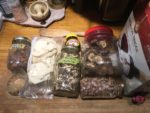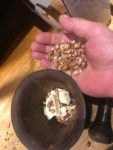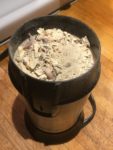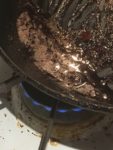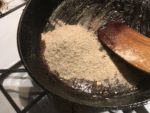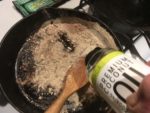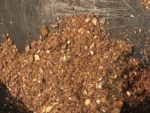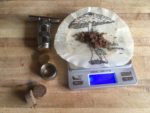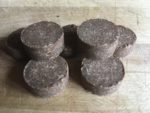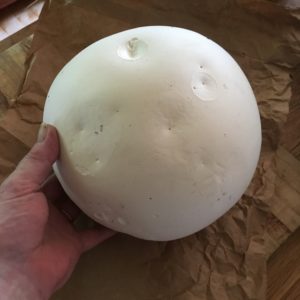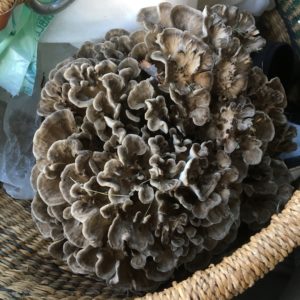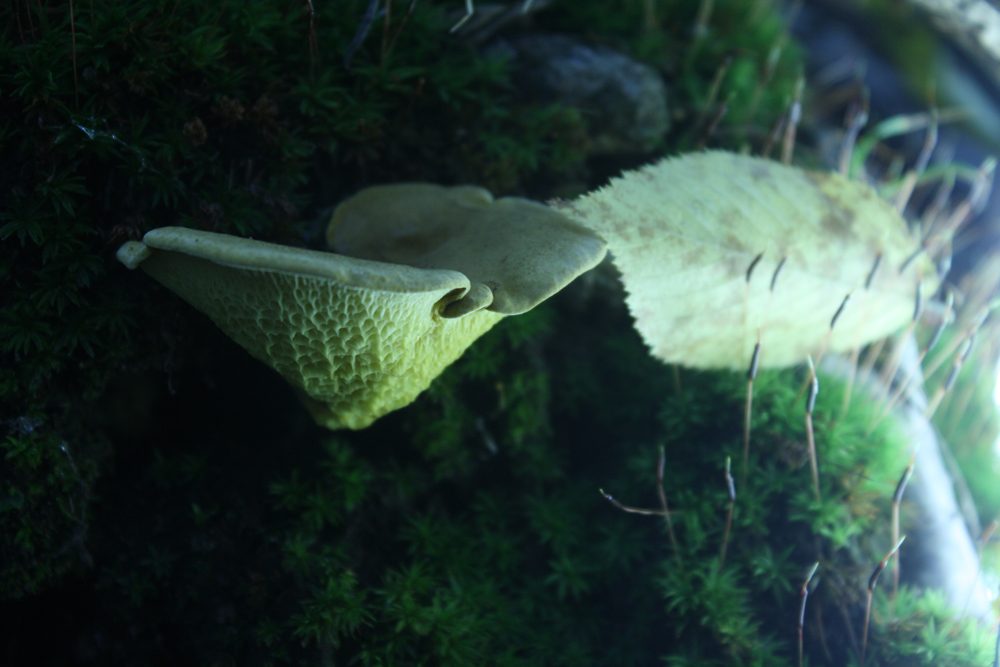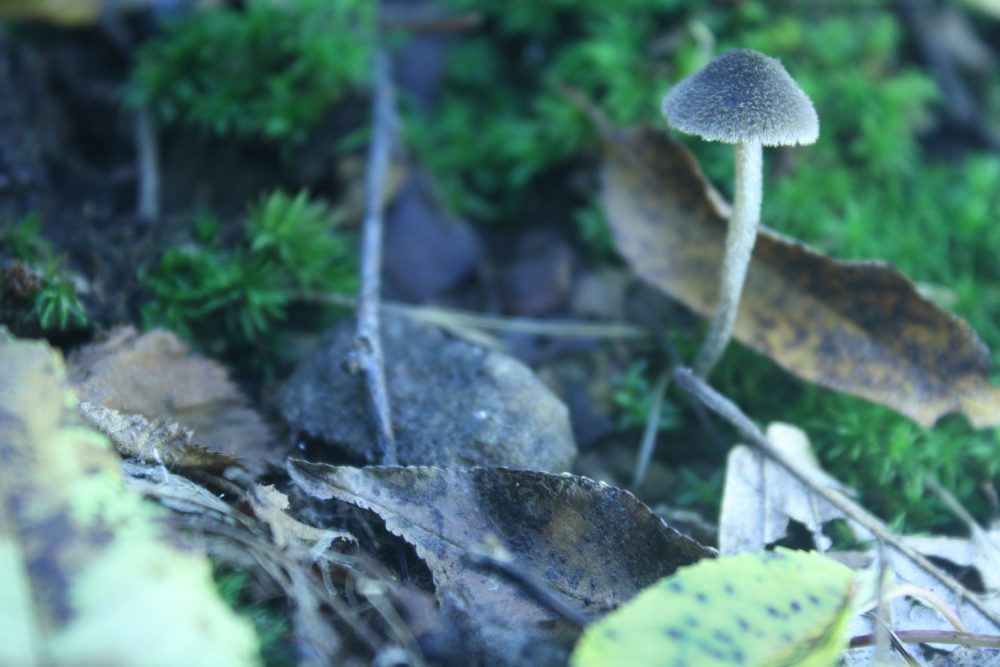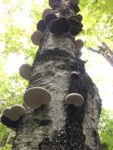 The Birch Polypore mushroom ( Fomitopsis betulina) is one of my favourite medicinals for a number of reasons. Firstly, it’s common in this area as we have many damaged and dead birch trees, which are the poypore’s only habitat. As such, it is easy to find, hard to confuse with others, and one can return to the same spot in any season and get more. The polypore is known to have many medicinal and practical uses.
The Birch Polypore mushroom ( Fomitopsis betulina) is one of my favourite medicinals for a number of reasons. Firstly, it’s common in this area as we have many damaged and dead birch trees, which are the poypore’s only habitat. As such, it is easy to find, hard to confuse with others, and one can return to the same spot in any season and get more. The polypore is known to have many medicinal and practical uses.
It is also known as the Razor Strop fungus, as strips of the dried fungus can be used to hone the edge of a razor, and can be fashioned into a guard for the blade during transportation. I imagine medieval barbers (who were also surgeons) must have carried the fungus, not just to sharpen the tools of the trade, but because the fungus has styptic (stops bleeding) and anti bacterial properties. Strips of the mushroom can be used as porous, antiseptic bandages.
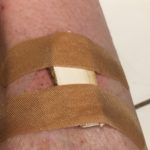 We know use of F. betulina was known in Europe well before that because (as I have written elsewhere) it was found in the possession of Ötzi the Iceman, the famous mummified man found in 1991 frozen in an Alpine glacier 5300 years after he perished. He might have used it to sharpen his copper axe. He might have used it to treat the arrow wound in his shoulder. Researchers have found that when he died he was living with the earliest case of Lyme disease known to science. It was an advanced case and the bacteria were found in his bones. Today Birch Polypore is known as an anti-bacterial, immune booster, anti-viral, anti-tumor, and anti-parasitic tonic. I have no doubt Ötzi was treating his Lyme with it.
We know use of F. betulina was known in Europe well before that because (as I have written elsewhere) it was found in the possession of Ötzi the Iceman, the famous mummified man found in 1991 frozen in an Alpine glacier 5300 years after he perished. He might have used it to sharpen his copper axe. He might have used it to treat the arrow wound in his shoulder. Researchers have found that when he died he was living with the earliest case of Lyme disease known to science. It was an advanced case and the bacteria were found in his bones. Today Birch Polypore is known as an anti-bacterial, immune booster, anti-viral, anti-tumor, and anti-parasitic tonic. I have no doubt Ötzi was treating his Lyme with it.
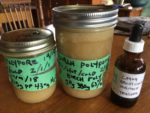 So I wanted to add Birch Polypore to my daily mushroom tonic mix. Since the last time I made a tincture a friend suggested that freezing in water, like heating, promoted the release of certain chemicals. The healing properties are attributed to an array of polysaccarides (long chain sugar molecules) and terpenes. Some dissolve in alcohol and some in water. Heat helps dissolve some, so why not freezing. It could at least help to break some of the tough chitinous cell walls.
So I wanted to add Birch Polypore to my daily mushroom tonic mix. Since the last time I made a tincture a friend suggested that freezing in water, like heating, promoted the release of certain chemicals. The healing properties are attributed to an array of polysaccarides (long chain sugar molecules) and terpenes. Some dissolve in alcohol and some in water. Heat helps dissolve some, so why not freezing. It could at least help to break some of the tough chitinous cell walls.
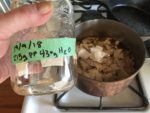 Tinctures need to have at least 25% alcohol as a preservative, so adjust this recipe to make sure of that, depending on what booze you use. I used 63% alcohol (Wray and Nephew Rum) I extracted from dried mushrooms, so as not to increase the water content. When mixed with equal parts of the water decoction should make a solution with just over 30% alcohol.
Tinctures need to have at least 25% alcohol as a preservative, so adjust this recipe to make sure of that, depending on what booze you use. I used 63% alcohol (Wray and Nephew Rum) I extracted from dried mushrooms, so as not to increase the water content. When mixed with equal parts of the water decoction should make a solution with just over 30% alcohol.
– 50g dried Polypore chopped into small pieces
– Soak in 380g of 63% alcohol (Wray and Nephew Rum) Maybe I should have put this in the freezer
– 250g fresh Polypore in medium pieces
– Freeze in in 430g water
– After 3 months put thawed fresh mushrooms and water in a double boiler and slowly reduce the liquid by half
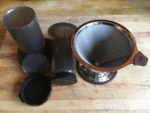 – filter/squeeze out the liquid, I drain it with a steel cone coffee filter, then squeeze out what I can with the Aerobee coffee press. if necessary, further reduce in the double boiler to 150mL (or half the volume of the 63% alcohol solution see next step)
– filter/squeeze out the liquid, I drain it with a steel cone coffee filter, then squeeze out what I can with the Aerobee coffee press. if necessary, further reduce in the double boiler to 150mL (or half the volume of the 63% alcohol solution see next step)
-remove the alcohol solution reserve for later (I got 300mL).
– put the remaining solids from the alcohol soak in the jar with 175mL water and freeze overnight
– next day filter/squeeze out 150mL of the liquid
– combine all the liquids for 600mLs of 30% alcohol tincture.
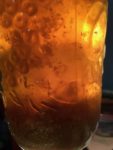 When combined with the clear brown alcohol tincture, the cloudy water decoctions congealed and separated. Although unsightly I just assume those are the water soluble sugars which are not alcohol soluble suspended in a preserving solution. I will not filter them out and I’ll shake well before using.
When combined with the clear brown alcohol tincture, the cloudy water decoctions congealed and separated. Although unsightly I just assume those are the water soluble sugars which are not alcohol soluble suspended in a preserving solution. I will not filter them out and I’ll shake well before using.
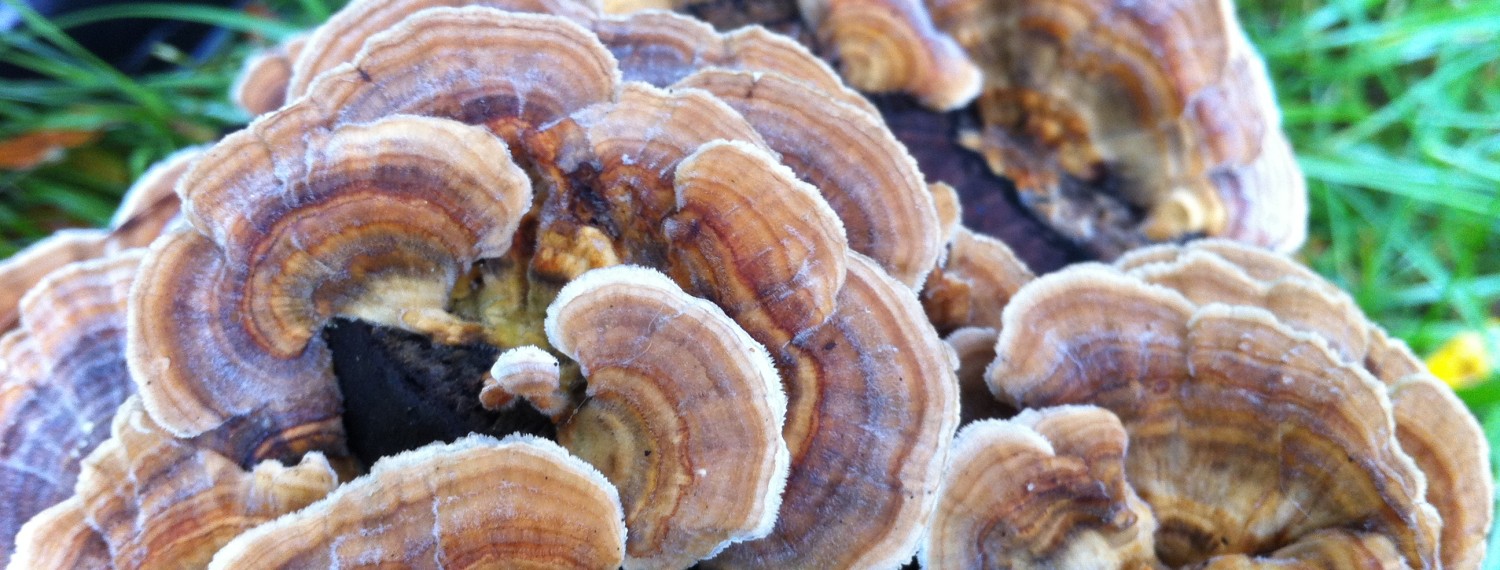

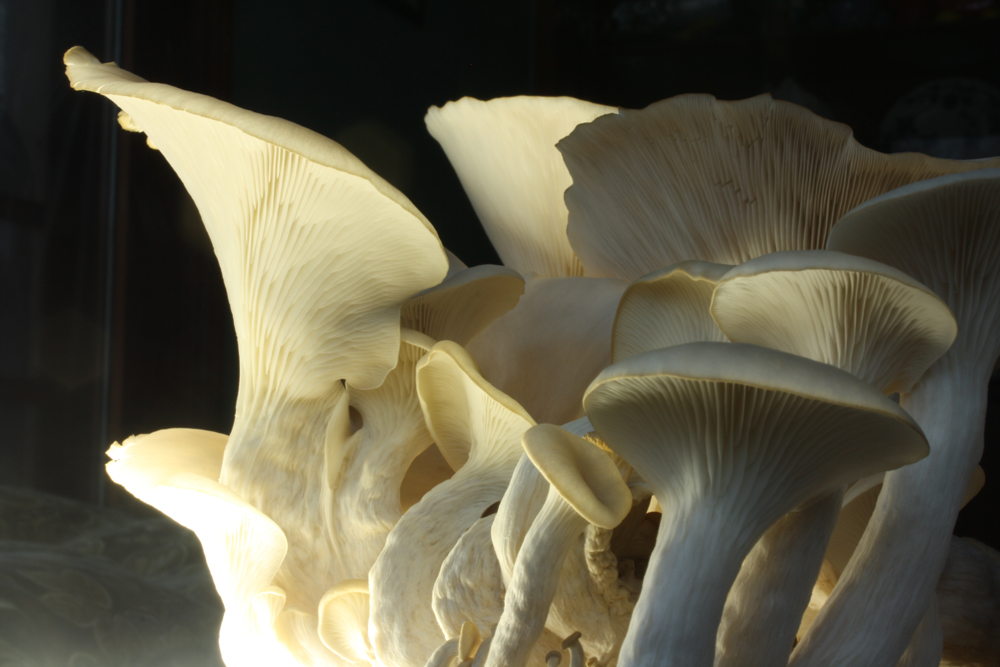
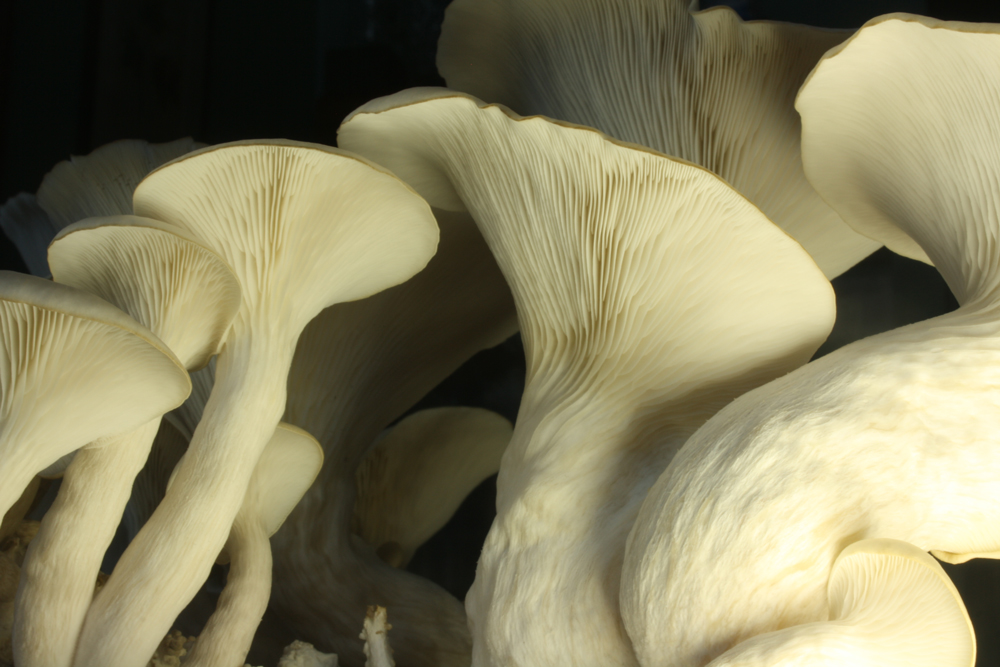
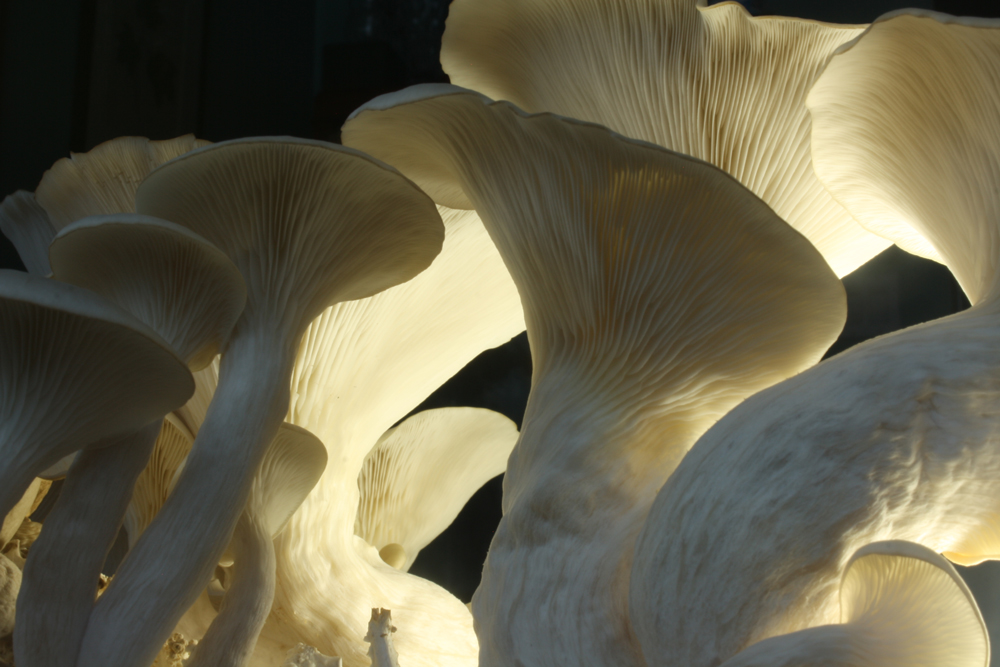


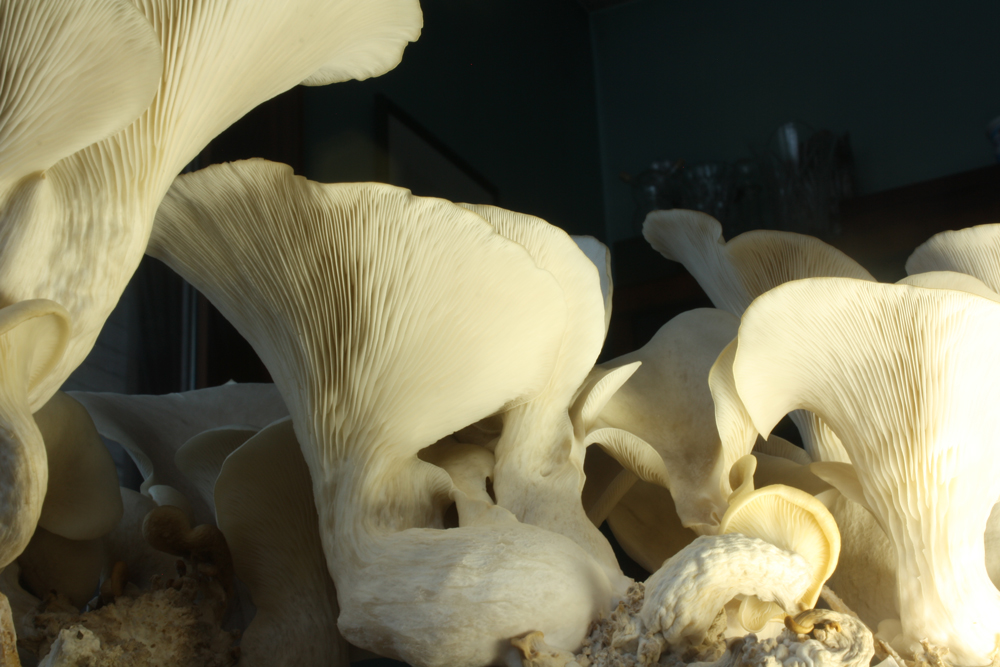


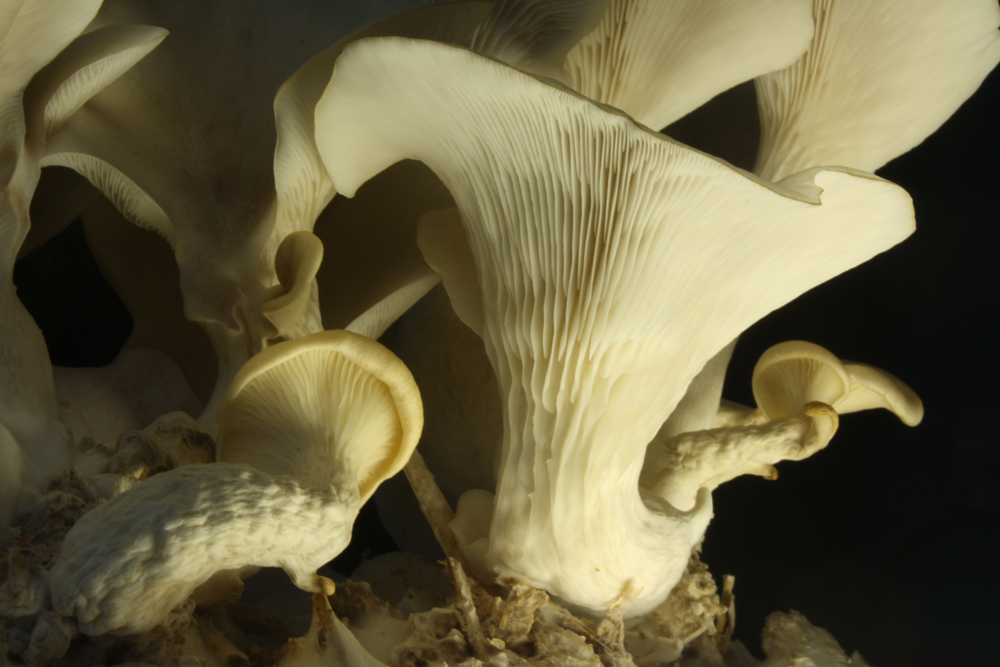
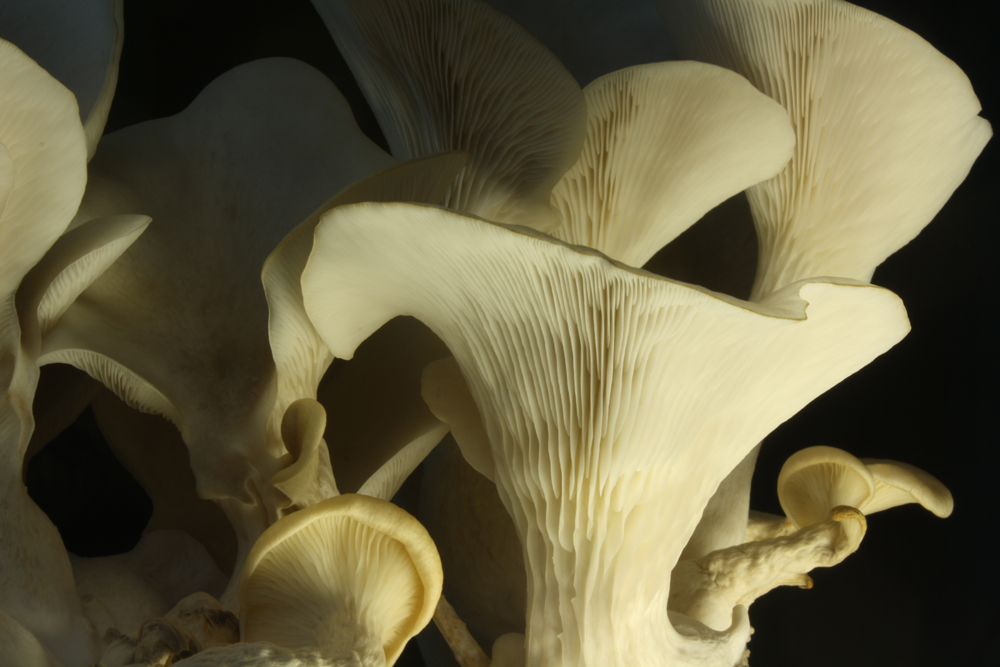
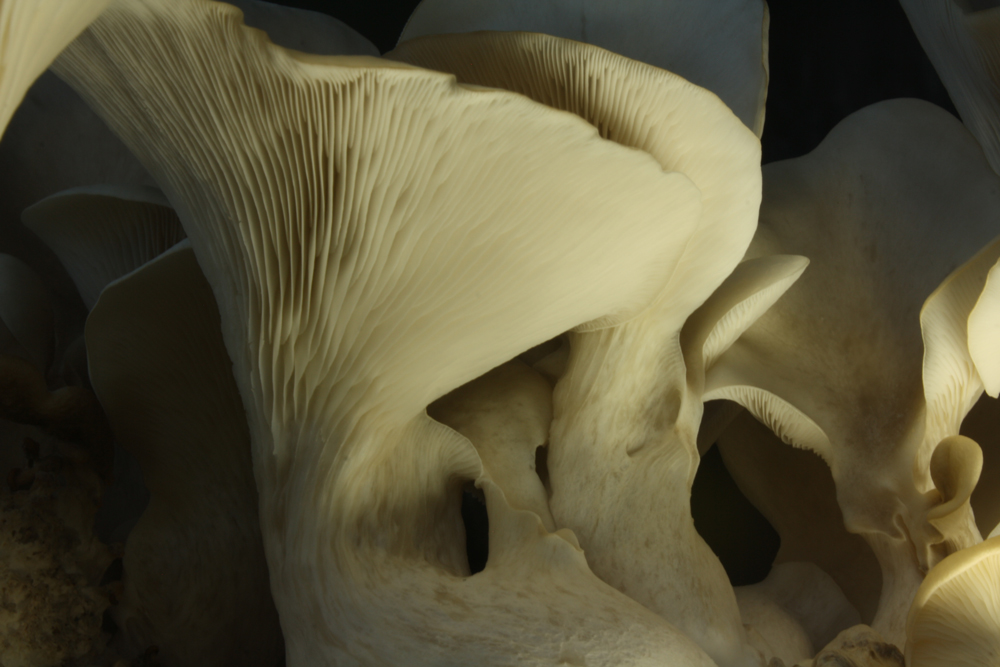







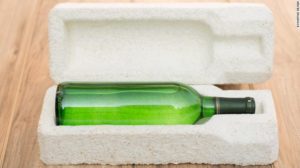
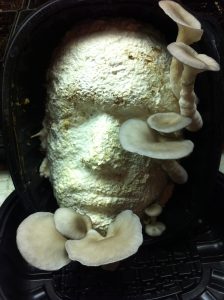 Check out this podcast about fungi I did with the
Check out this podcast about fungi I did with the 